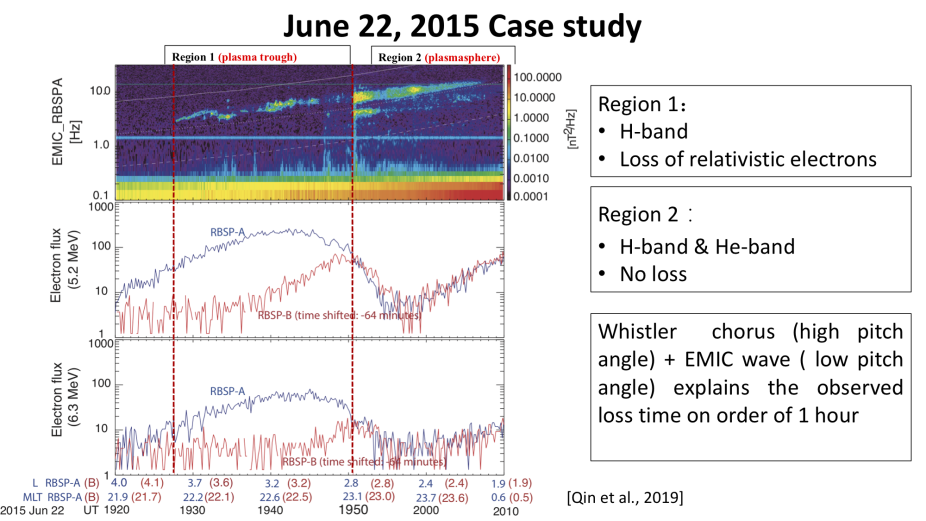Publication Name: JGR Space Physics; First HAO Author's Name: Mary K. Hudson
A recent statistical study has suggested that not all electromagnetic ion cyclotron (EMIC) waves can scatter relativistic electrons. However, knowledge of the factors that influence the EMIC wave scattering efficiency is still limited in observations. In our study, we perform 6 years of analysis of data from 2013 to 2018, with relativistic electron precipitation (REP) observed by POES and EMIC wave observations from Van Allen Probes. The coincidence occurrence rate between EMIC waves and relativistic electron precipitation events is about 34%. Proportion of different bands of EMIC wave events that are associated with REP is as follows: H+ band and He+ band waves occurring simultaneously >H+ band >He+ band occurrence, same as in our previous study (Qin et al., 2018, https://doi.org/10.1029/2018JA025419).

H+ band Electromagnetic Ion Cyclotron (EMIC) waves produce loss of relativistic electrons as seen by two Van Allen Probes spacecraft separated along orbit by ~ 1 hour during June 2015 storm (Qin et al., 2019). Statistical study of this type of event Qin et al., 2020.
It is also found that the coincidence occurrence rate of EMIC wave events and REP events increases with respect to increased background plasma density, with increases in the ratio of plasma frequency to local gyrofrequency, increasing EMIC wave power and when the wave frequency approaches the gyrofrequency. The dependence on background electron density is stronger than the dependence on the ratio of plasma frequency to gyrofrequency. The coincidence occurrence rate decreases as the magnetic field increases between 120 and 270 nT, consistent with a previous study. These results are critical for better understanding and predicting the REP into the upper atmosphere due to EMIC waves